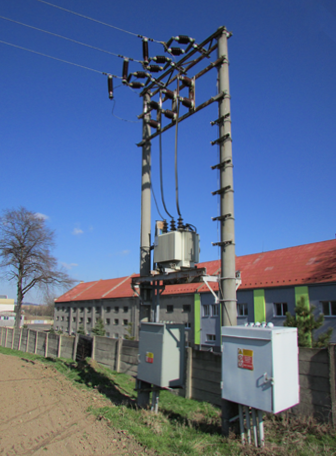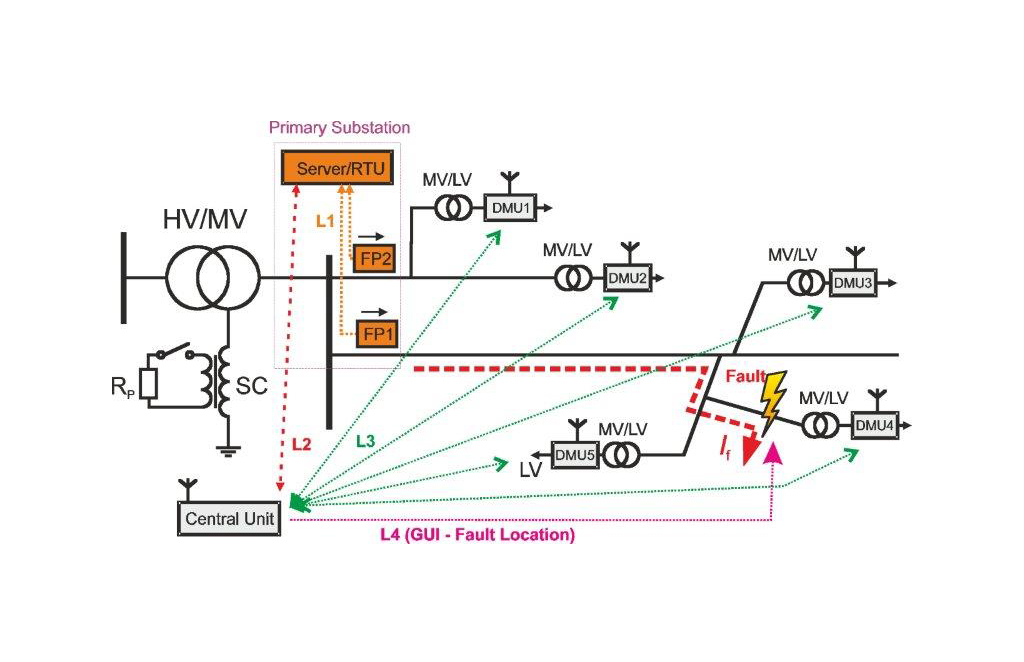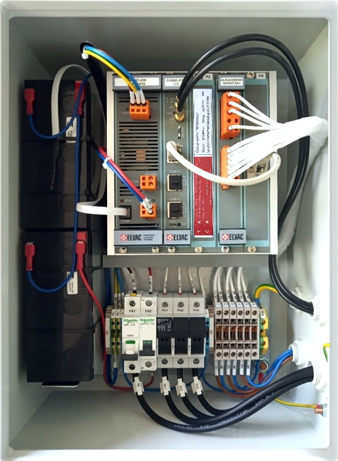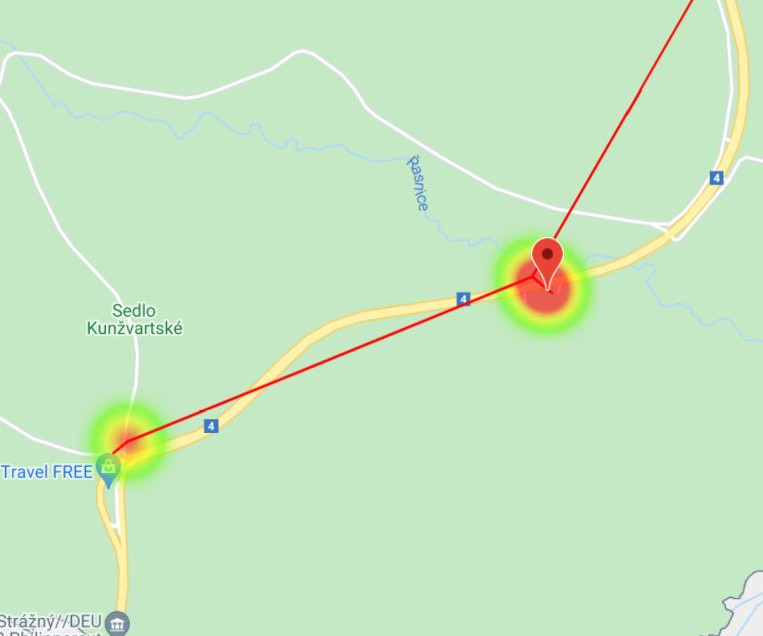
Vdip - New Approach to Earth Fault Detection on MV Lines
Earth Fault Detection System Vdip Description
The Vdip Earth Fault Detection system was designed for the automatic localization of earth faults in compensated (resonant earthed) systems, which are difficult to localize due to low level of earth fault currents. With regard to its functional principle, the Vdip system can also be used for short-circuit faults localization. The Vdip monitoring system itself is composed of feeder protection units (FP) and distributed measurement units (DMU), which are located on the secondary sides of MV/LV transformers. In the event of a fault, the feeder protection is triggered, generating a fault record, which is immediately transmitted to the concentrator (PC or RTU) located at the primary HV/MV substation, and subsequently to the central unit of the Vdip system. Fault indication from the feeder protection initiates also downloading of the fault records from the individual DMUs located at transformer stations connected to the faulty feeder.
Any voltage monitor, which enables to store oscillograms of phase voltages in a circular buffer and to send a fault record for the requested time of fault occurrence, can be incorporated into the Vdip system, but ELVAC company provides suitable and cost efficient devices (RTU and low voltage monitors) to provide complete solution, so the choice depends on the customer and his starting point (existing equipment in the grid). The fault records from the DMUs and FP are then synchronized and processed in the central unit to obtain the negative sequence changes of voltage ΔUm(2) and current ΔIm(2), which are the input to the Vdip localization algorithm.
The localization algorithm of the Vdip Earth Fault Detection system is based on the patented method, where the negative sequence current monitor (NSCM) represents a given feeder protection and the negative sequence voltage monitors (NSVM) represent individual DMUs. The results of the localization algorithm are coordinates of the expected fault location, which are displayed to the dispatchers via the user interface (part of the SW solution, but integration into existing SCADA or OMS is also possible). The advantage of the Vdip system is possibility of multiple fault localization based on one set of fault records. Based on the deviation of fault locations obtained from one set of fault records, the plausibility of the identified fault location can then be assessed.
System Components and Licensing
It is possible to purchase DMU set based on RTU7M unit produced by ELVAC company, where low voltage monitor (power quality analyzer) and communication module (using LTE modem or other standard) are integrated. If suitable voltage monitoring devices are already installed in the grid, then it is possible to use just RTU7MC3 communication device from ELVAC, which manages connection and data transfer to Vdip system server. It is also possible to implement all required functionality into a third party devices.
Vdip system licensing is based on core license, feeder licenses and DMU device licenses, which are “vendor independent” and managed by Vdip system server. The Vdip software provides web based user interface for regular users, administrative tool (MS Windows app) for system configuration and maintenance, and also integration API for interconnection with other SW systems used by the grid operator.


